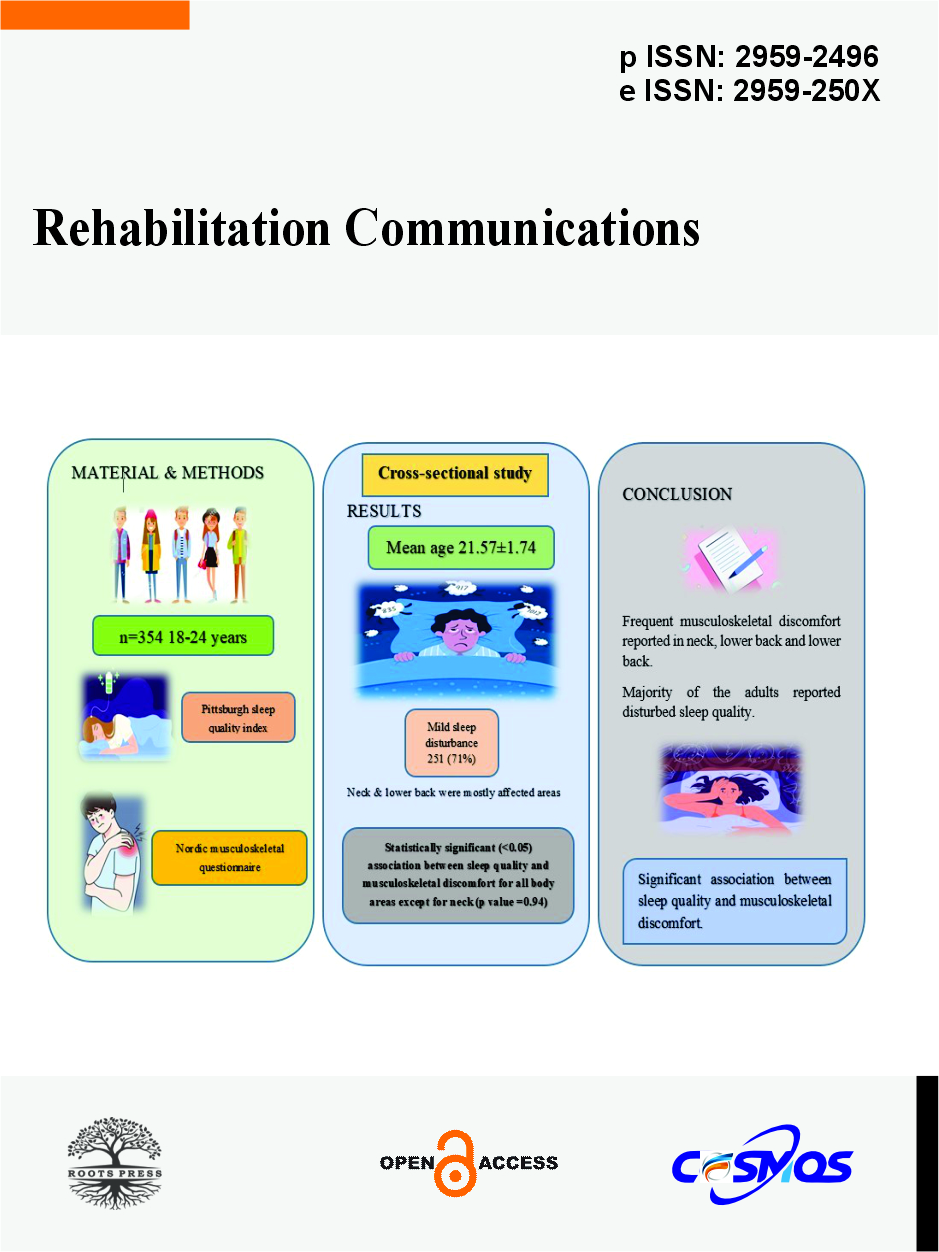Prevalence of Low Back Pain Among Bank Workers in Peshawar, Pakistan
DOI:
https://doi.org/10.55627/rehab.003.001.0781Keywords:
prevalence, low back pain, bank workers, visual analog scale, functional disabilityAbstract
Low back pain (LBP) is estimated to affect 90% of the global population and is considered the most common reason for functional disability worldwide. The objective of the present study was to measure the severity of back pain according to the visual analog scale (VAS), to identify the prevalence of LBP among bank workers, and to determine the primary risk factors of low back pain among bank workers. This study was submitted to and approved by the Institutional Research Committee (IRC) - NCS University System, Islamabad, Pakistan. A quantitative, cross-sectional research design was employed in this study. Data were only collected from those participants, who were willing and met our inclusion criteria after approval from the graduate committee of the NCS- University system. Before the collection of data, permission was taken from the respective participants. Conveniently 405 participants among the bank workers were collected from various banks in Peshawar, Pakistan. The instruments used include a direct interview, a body discomfort assessment tool that consists of a VAS) and a questionnaire. Data was collected by mixed type questionnaire and confidentiality of information and voluntary participation were ensured by the researcher. Data were numerically coded and captured in Excel, using an SPSS 25 version program. The study's findings provide a baseline of information about the prevalence of back pain among bank workers. It was found that 65.6% of the workers had experienced LBP, with males (80.7%) being more vulnerable than females (19.3%). The most affected age range was 25-38 years, which constitutes the largest proportion of the workforce. This high prevalence in such a significant age group could negatively impact a company's productivity. The study also revealed that the prevalence of back pain was highest among those with job experience of more than three years (69.9%), followed by those with 1-2 years of experience (23.3%), and the least among those with less than one year of experience (6.8%).
Downloads
Published
Issue
Section
License
Copyright (c) 2024 Dr. Ataur Rahman, Iftikhar Ahmad, Muhammad Nauman, Muhammad Ayaz, Muhammad Naeem

This work is licensed under a Creative Commons Attribution 4.0 International License.








